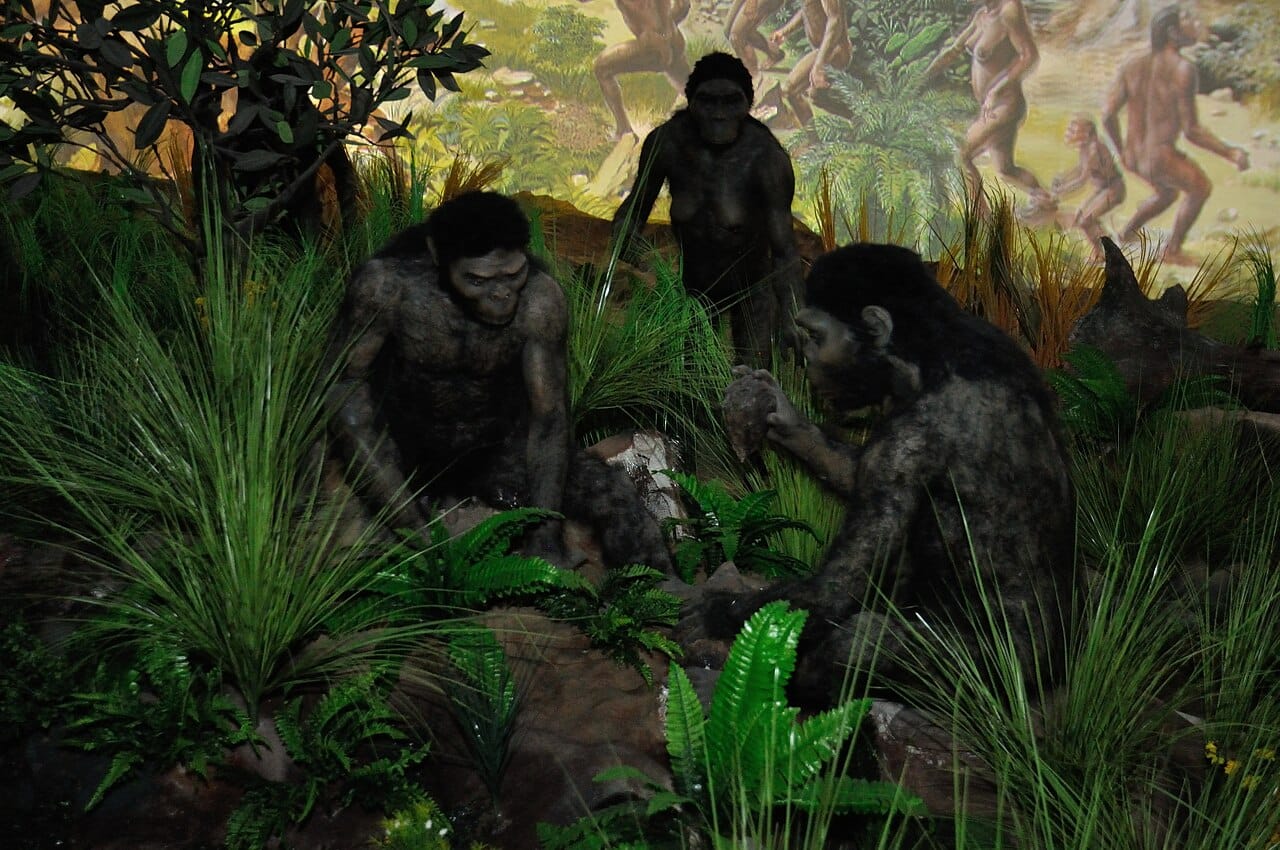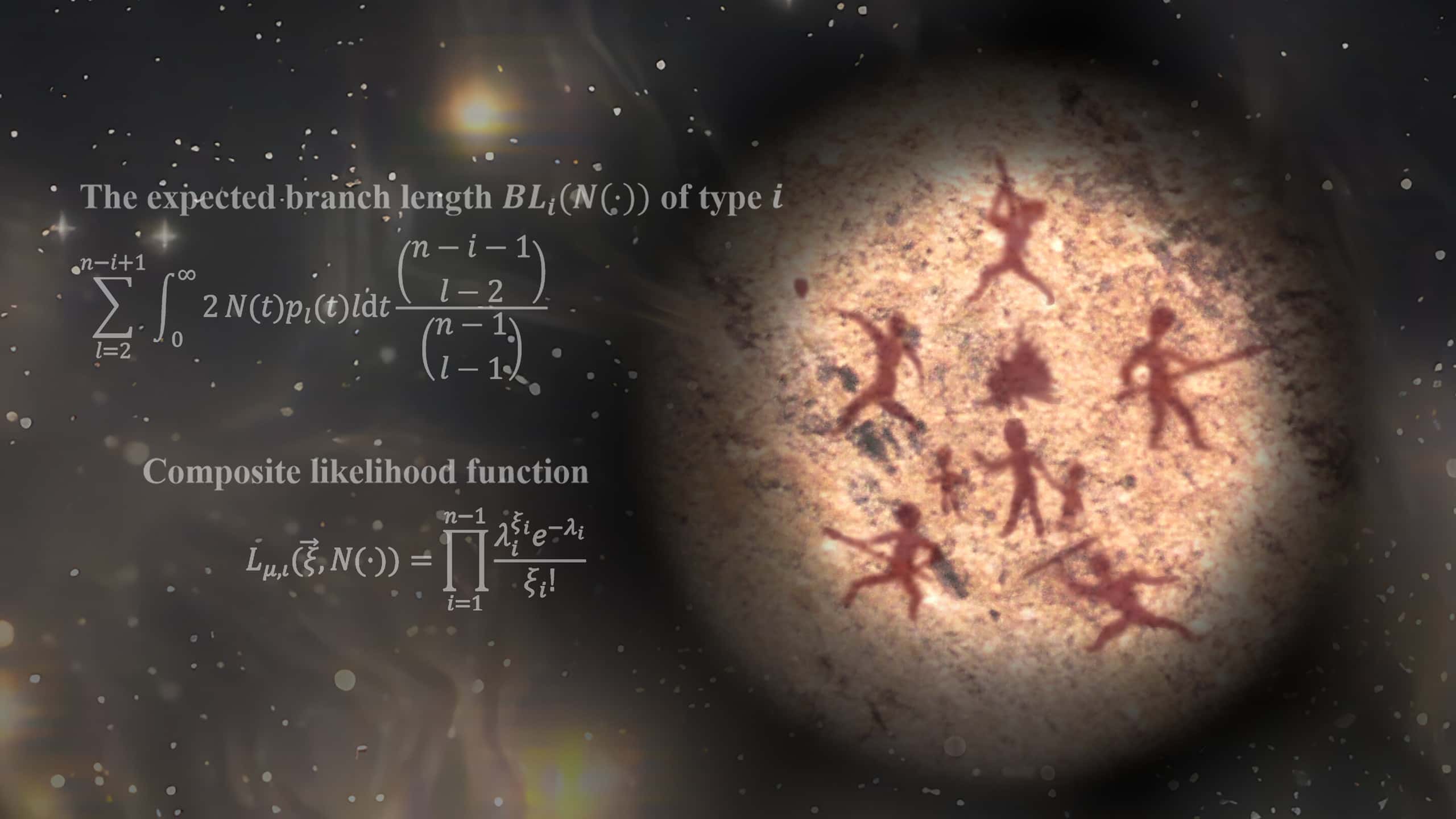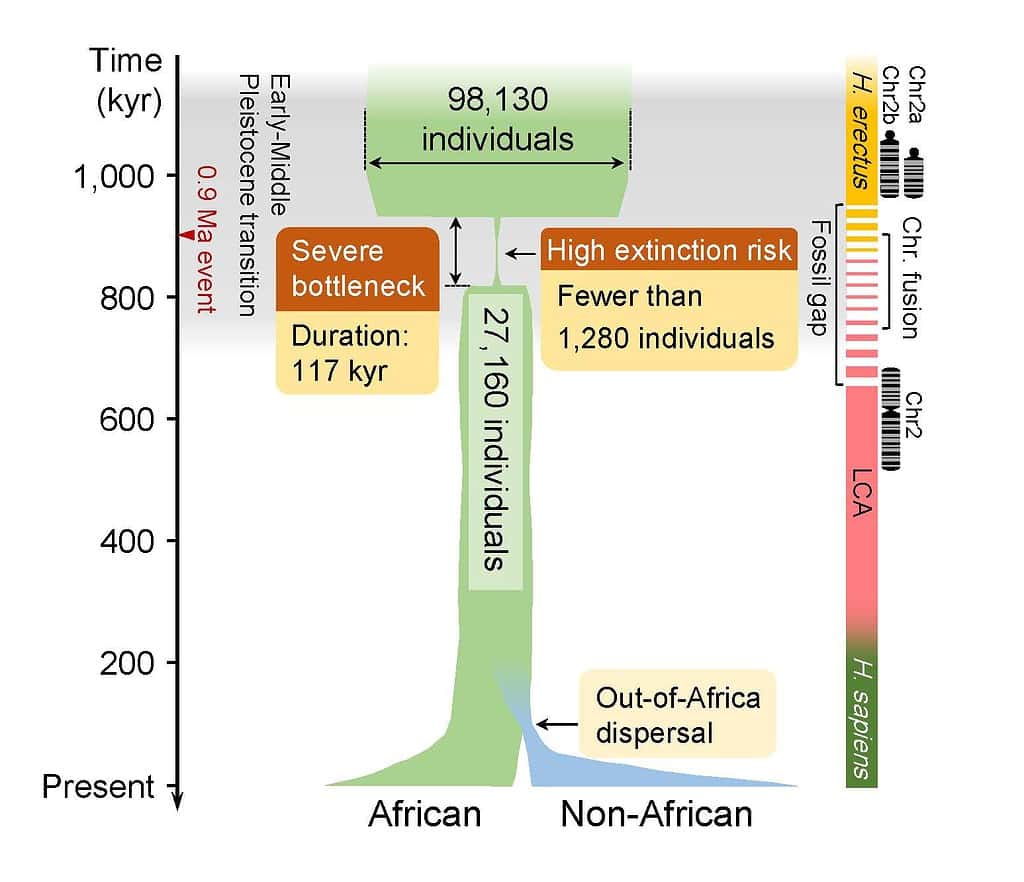
Humans are, as far as we know, the most successful species that has ever evolved on this planet. We’ve spread across the entire world, even through the unhospitable polar regions, bending nature to our will. Our technology allows us to travel to virtually any part of the world in a matter of hours. After conquering this world, humans have even traveled to the Moon and will soon touch down on Mars.
But it’s easy to take this human success story for granted. In fact, it’s only thanks to blind luck that Homo sapiens are a thing today. Throughout history, our species and our ancestors have gone through multiple crises that threatened to make us extinct. According to a new study out this week, one such event may have occurred roughly 900,000 years ago.
Around this time during the early Pleistocene, the number of human fossils scientists have found is very small compared to the rest of the fossil record. Now, a genomic analysis suggests that our human ancestors went through a severe population bottleneck during this time of crisis. This would explain the fossil gap: there simply weren’t that many people left anymore to leave traces behind them.
While there are more than 8 billion people alive today, scientists believe our ancestors’ total population plummeted to just 1,280 breeding individuals — and this crisis lasted for nearly 117,000 painful years. Before the crisis, the researchers estimate the human population hovered around 27,000 individuals.
The international team of researchers, which included scientists from China, Italy, and the U.S., employed an innovative technique called FitCoal (fast infinitesimal time coalescent process) to shed light on a previously unexplained gap in the African and Eurasian fossil record. Instead of relying solely on fossils, this technique leveraged modern-day human genomic sequences from 3,154 individuals to infer the demographics of ancient human populations.

The results indicate a significant drop in genetic diversity among our ancestors between 800,000 and 900,00 years ago. And this loss of genetic diversity can only mean one thing: a proportional plummeting of the population.
“The gap in the African and Eurasian fossil records can be explained by this bottleneck in the Early Stone Age as chronologically. It coincides with this proposed time period of significant loss of fossil evidence,” says senior author Giorgio Manzi, an anthropologist at Sapienza University of Rome.
This period of extreme genetic constriction had far-reaching consequences. It’s estimated that approximately 65.85% of the current genetic diversity in modern humans may have been lost due to this critical population bottleneck in our lineage’s history.
Human ancestors on the Red List

One intriguing finding is that this bottleneck might have contributed to a speciation event, where two ancestral chromosomes merged to form what we now know as chromosome 2 in modern humans. This mysterious human species may have been the last common ancestor of Denisovans, Neanderthals, and Homo sapiens.
But what happened during these perilous times that almost wiped out our entire lineage? Extreme climate change was likely the main factor behind this drastic decline. Around the same time, glaciation events caused wild swings in temperature, severe droughts, and the extinction of fauna that human ancestors likely depended on for food. As a result, the population plummeted to around 1,200 individuals. By the criteria of the International Union for Conservation of Nature (IUCN), this would have classed our ancestors somewhere between “endangered” and “critically endangered”.
Where did these individuals live during this challenging period? How did they survive the catastrophic climate changes? Did natural selection during the bottleneck accelerate the evolution of the human brain? These are all open questions at the moment that may be answered as scientists carry out more research and refine their methods. There is still a huge knowledge gap about what transpired during the Early to Middle Pleistocene transition period. As we dig deeper, we hope to uncover more pieces of the puzzle that is our early human ancestry and evolution.
The new findings appeared in the journal Science.






